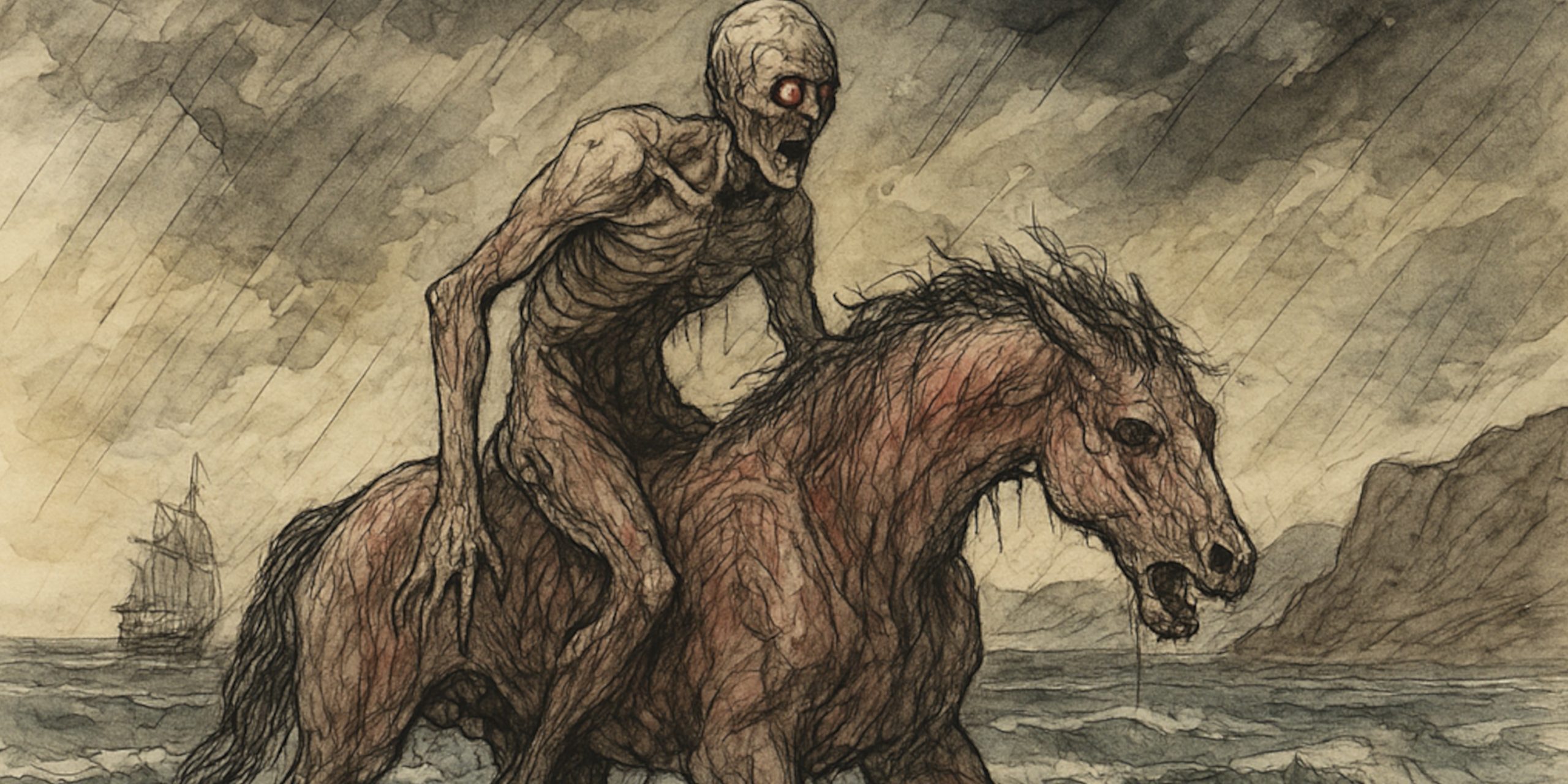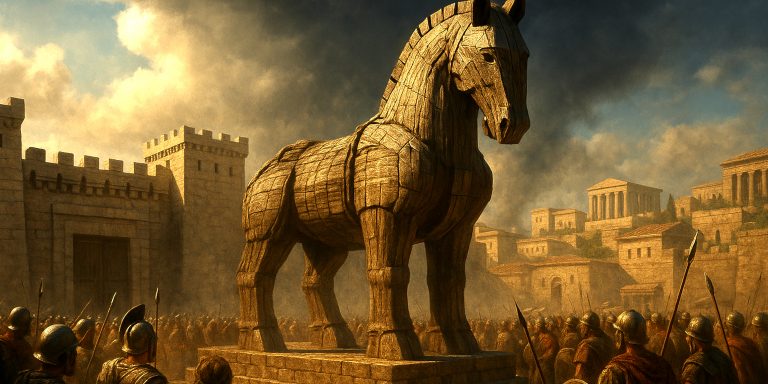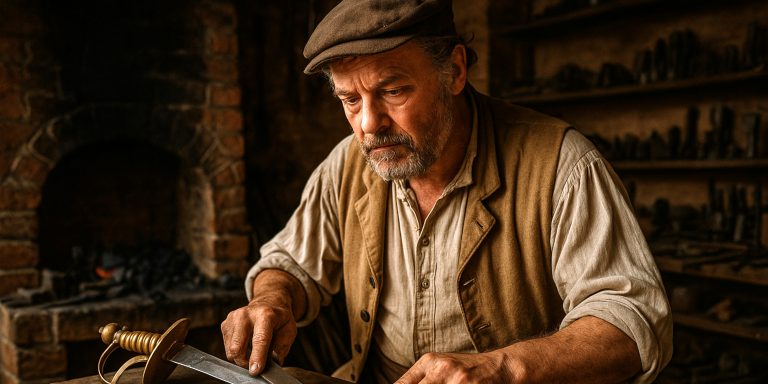
The Nuckelavee is the creature that haunts even the nightmares of folklorists. It is the apex of revulsion, the thing that refuses to be sanitised into quaint legend. Born from the cold waters around Orkney, it is part horse, part man, and entirely horrid. Without skin, its raw flesh exposes black blood, sinews and pulsing veins. If you think that sounds theatrical, you would be correct, except the locals genuinely believed this creature could bring plagues, rot crops and ruin cattle.
The Orkney people, who faced long winters and cruel seas, needed no encouragement to respect the unseen. And yet, even among their pantheon of trolls, sea-devils and wights, the Nuckelavee stands alone in its grotesque infamy.
Origins and History
The Nuckelavee belongs to the pre-Christian sea lore of the Northern Isles, likely descending from Norse myth and local interpretations of oceanic evil. The name itself is thought to come from the Old Norse nykur (water horse) combined with laeva, meaning “evil”. It was said to live beneath the sea during summer, restrained by the Mither o’ the Sea, a kind of oceanic matron who kept it subdued. But come winter, when her power waned, the creature would emerge and roam the land, spreading disease and despair.
Orkney farmers blamed it for failed harvests, mysterious epidemics among livestock, and the fetid smell of decay on the wind. If something rotted without reason, the Nuckelavee had likely passed by.
Description and Form
Descriptions vary slightly, but all share a sense of horror:
- The Nuckelavee is a hybrid creature, half man, half horse.
- It has no skin, revealing raw muscle and yellow fat beneath black veins.
- The rider’s torso grows directly from the horse’s back, its arms dragging almost to the ground.
- Its breath was said to wilt crops and sicken men.
- Its one red, rolling eye could set fields alight or curdle milk at a glance.
The lack of skin is its most grotesque feature. In symbolic terms, it strips away the barrier between man and the elemental world, showing what lies beneath civilisation’s surface. It is humanity’s arrogance peeled back.
Contemporary Accounts
Walter Traill Dennison, an Orkney folklorist writing in the late 19th century, recorded local tales of the Nuckelavee with both fascination and horror. One account tells of a man named Tammas, who encountered the creature near a tidal stream. He managed to escape only by crossing fresh water, which the Nuckelavee could not abide. Tammas reportedly described its form in nauseating detail: the skinless horse, the human torso fused grotesquely to its back, and the smell of rotting seaweed and disease that followed it.
The story carries that particular island blend of caution and gallows humour. As one local quipped in the 1880s, “You’ll ken when the Nuckelavee’s abroad, for the very air goes wrong.”
Weapons, Battles, and the Folkloric Struggle
The Nuckelavee is not a creature of war in the conventional sense, but its weapon is the sea itself. When enraged, it was said to churn the ocean, drown boats, and send sickness inland on the wind. Fishermen treated it as the vengeful embodiment of the sea’s wrath, the spirit that punished arrogance and greed.
In folkloric terms, its battles were fought not with steel but with superstition. Holy water, fresh streams, and the invocation of protective charms were the only means of survival. Some spoke of the Mither o’ the Sea as its eternal opponent, the benevolent force holding it at bay. Their seasonal conflict echoed the eternal struggle between winter and spring, decay and renewal.
Treasure, Bounty, and Symbolism
Unlike sirens or selkies, the Nuckelavee offers no temptation, no hidden reward. It guards no treasure and promises no beauty. Its bounty is rot. In this way, it serves as a grim moral tale: that not all spirits offer bargains, and not all stories have redemptive endings. The Nuckelavee is decay personified, a reminder that nature is not sentimental, and that the sea gives and takes without care for the human condition.
The Fate of the Nuckelavee
Today, the Nuckelavee survives as one of the most unsettling figures in Celtic and Norse folklore, often reimagined in modern fantasy but rarely improved upon. In the Orkney tradition, it remains bound by the sea, held back by the Mither’s strength. Each year, as winter storms lash the islands, locals half-jokingly remind one another that the creature might be stirring again.
Its survival into the digital age is proof of how enduringly humans need monsters. The Nuckelavee is less a literal beast than a metaphor for unchecked nature and human guilt in the face of it.
Personal Reflection
Studying the Nuckelavee feels like examining the id of the human relationship with the natural world. It strips away myth’s tendency toward heroism and instead wallows in filth, pestilence, and fear. It is a myth born not from curiosity but survival. I find it almost endearing in its complete refusal to be romanticised.
If the kelpie is the seducer of Scottish lochs, the Nuckelavee is its vile cousin, waiting in the surf to remind us that some things from the deep should be left undisturbed.
The Takeaway
The Nuckelavee stands as folklore’s most revolting achievement. A creature that inspires disgust rather than awe, reminding us that myth is not always about beauty, courage or redemption. Sometimes, it’s about staring into the abyss and laughing grimly at how much it looks like us.



